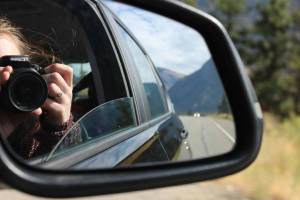
5 Road Trips to Enjoy Over Easter Weekend 2025
Easter Weekend is one of South Africa’s most popular times for adventurous getaways, with local...
 14 April 2025
14 April 2025 
Zimbabwe’s list of animals is extensive, including carnivorous creatures like African wild dogs, lions, and leopards and herbivores like elephants, giraffes, and wildebeest.
In fact, the country is home to over 350 species of mammals, 500 bird species, and 131 species of fish.
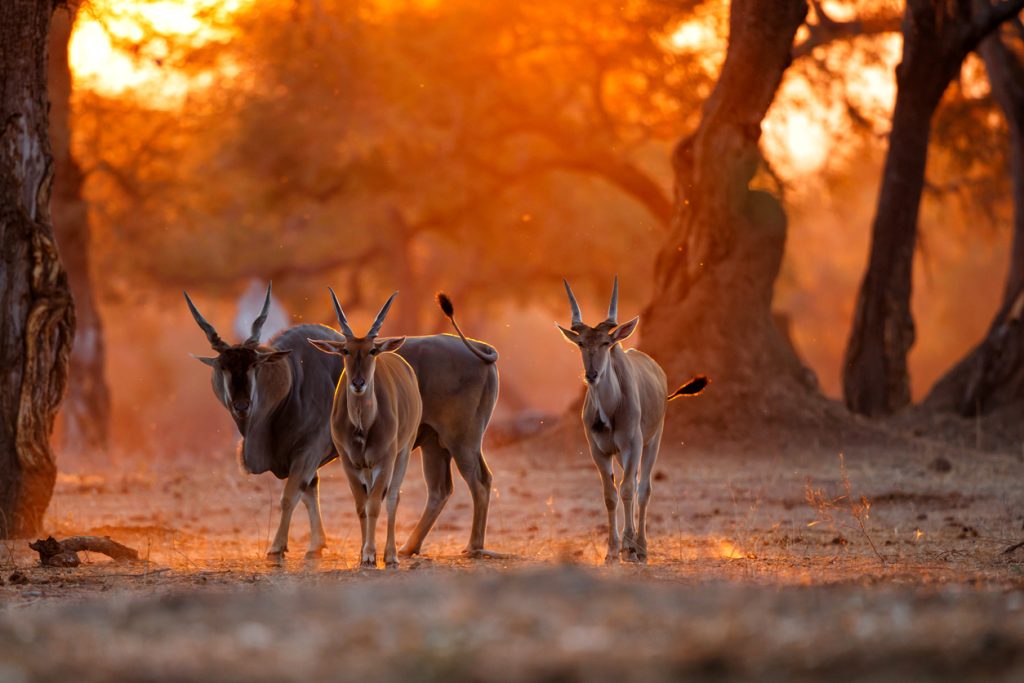
The common eland, also known as the southern eland or eland antelope with back light with sunset in Mana Pools National Park in Zimbabwe
With an abundance of sanctuaries, national parks, and private game reserves, you’ll get plenty of chances to see iconic species in their natural ecosystems.
Here’s a list of 10 animals you’re likely to come across on a safari in Zimbabwe.
The African elephant is the largest land mammal and the heaviest land animal on the planet. Elephants play an important role in the survival of other species by digging water holes in dry riverbeds and spreading seeds via their dung.
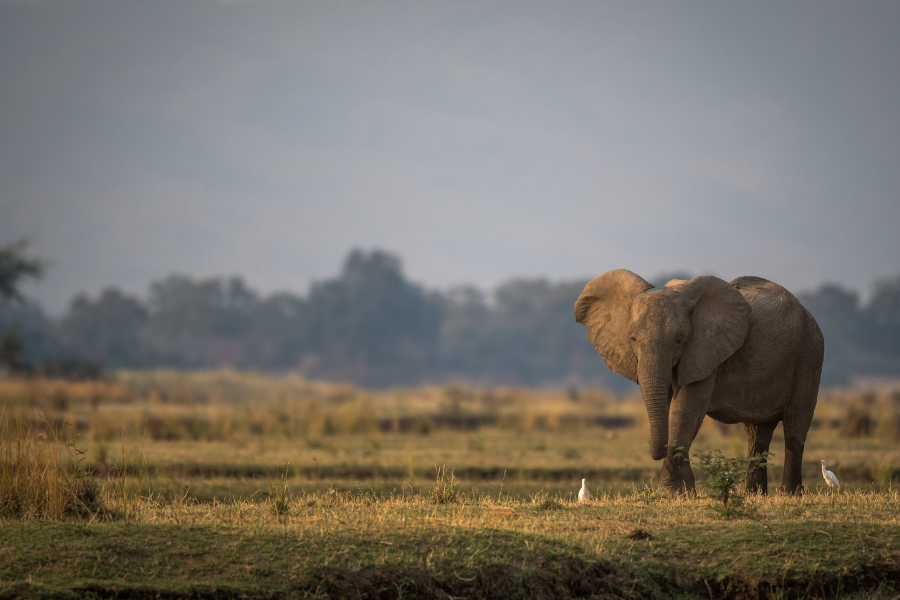
Above: African Elephant in Zimbabwe
Female elephants spend their entire lives living in large groups called herds, while male elephants leave the herd at about 13 years old, sometimes joining ‘bachelor herds’ of other male elephants.
Depending on terrain, climate, and family size, a herd can range from 8-100 individuals. In Zimbabwe, elephants roam freely in national parks like Hwange and Mana Pools.
Zimbabwe plays host to a significant population of lions, with an estimated number of 1,750 lions in the country. Hwange National Park is famous for its lion population, thought to be one of the largest in Africa.
These big cats are highly social animals, living in prides of related females, their offspring, and a few resident males. The females do the majority of hunting, while the males generally defend the pride’s territory.
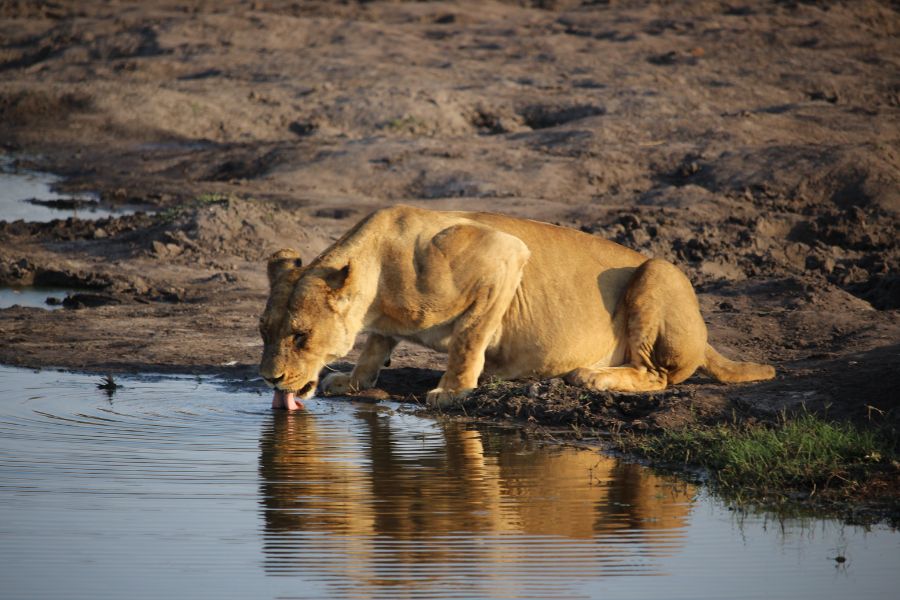
Above: Lion Drinking from water hole in Zimbabwe
A lion’s roar is so powerful that it can be heard up to 8 kilometers away. Weighing up to 225 kilograms, the lion is easily the largest of Africa’s big cats.
Once found throughout sub-Saharan Africa, the rhino has been hunted to the brink of extinction and is possibly the toughest of the Big Five animals to spot in the wild. There are two species of rhino in Africa, the white rhino and the black rhino.
Thanks to conservation efforts, the white rhino has made a comeback, but black rhinos are still very much one of Africa’s most endangered species.
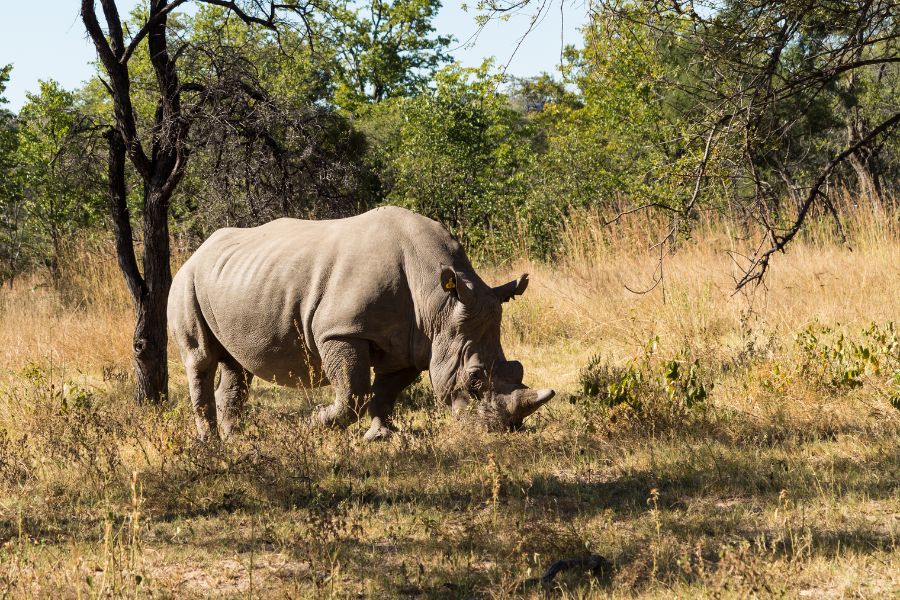
Above: Large Rhino Grazing the Grass in Zimbabwe
Places in Zimbabwe where you’re likely to see rhinos include Bubye Valley Conservancy, Save Valley Conservancy, Malilangwe Conservancy, and Gonarezhou National Park.
Weighing in at close to a ton, the Cape Buffalo has a well-deserved reputation of being aggressive and dangerous. While they’re usually docile in a herd, solitary buffaloes can be bad-tempered and unpredictable.
Buffalo will try to have their calves in the rainy season where there is no shortage of green grass packed with nutrients to support lactating females.
A buffalo calf can stand within ten minutes of being born, which is important since predators often hunt them and need to move with the herd in search of food and water.
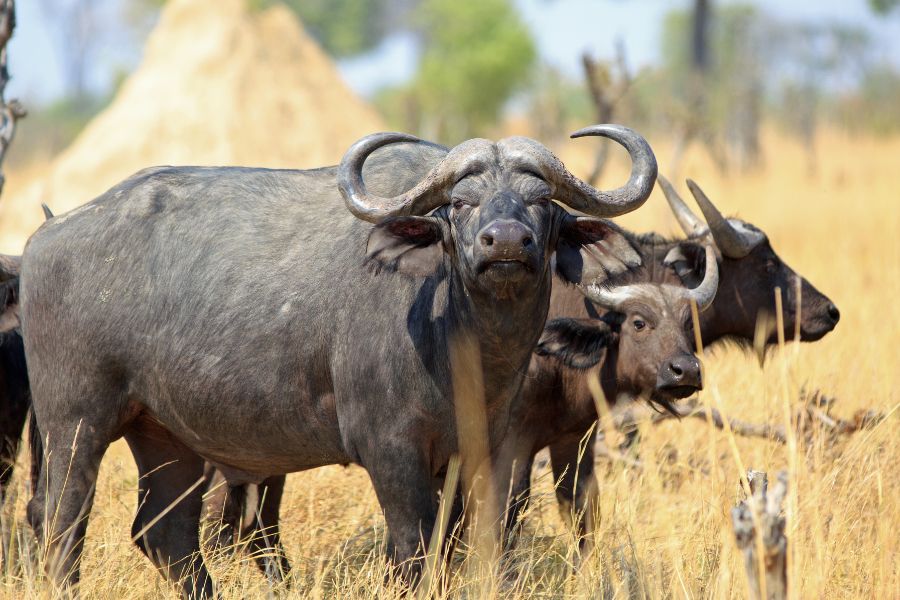
Above: Cape Buffalo standing on the African plains looking into camera
If you’re looking to spot these impressive creatures, head to Mana Pools National Park and Hwange National Park.
The leopard is an elusive creature that’s often hard to spot.
If you happen to see one of these big cats carrying a kill up a tree, you’ll be amazed by its power and agility. Leopards rely on their excellent camouflage to stay hidden in daylight hours and are mostly nocturnal hunters.
They survive on a variety of prey and are known to hunt smaller antelope, rock hyrax, fish, insects, reptiles, birds, rodents, porcupines, mongoose, baboons, genets, and monkeys.
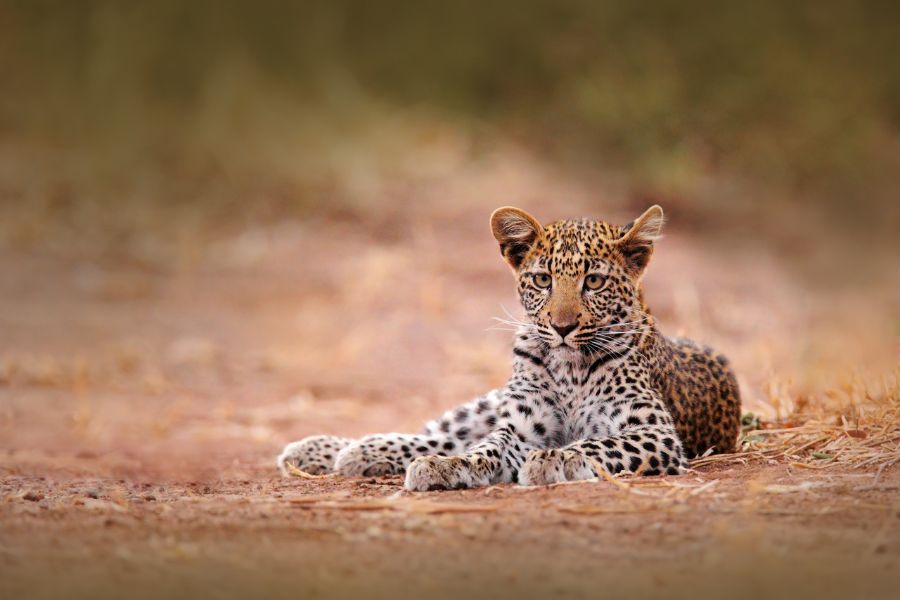
Above: Young African Leopard, Panthera pardus shortidgei, Hwange National Park, Zimbabwe.
If you’re looking for these shy creatures in Zimbabwe, they can often be found in Hwange National Park, Mana Pools National Park, Matobo National Park, and Gonarezhou National Park.
Hyenas play a vital role in maintaining the balance of ecosystems and are fascinating creatures to observe in their natural habitat. There are flour species in the hyena family, all varying in size and shape.
Hyenas live in large groups called clans that can have up to 80 members. When it comes to hunting, they’re extremely versatile, typically running down their prey to exhaustion.
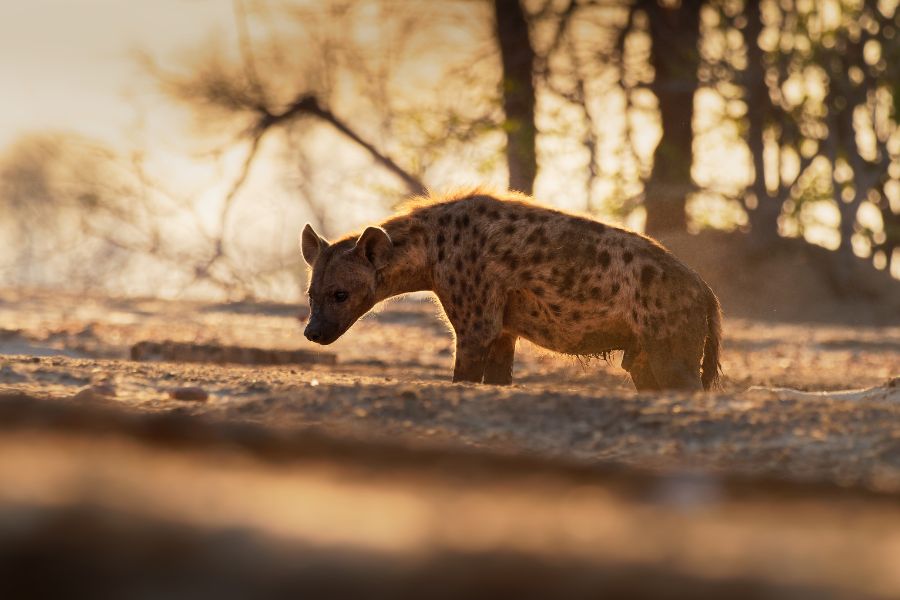
Above: Spotted Hyena after meals walking in the park. Beautiful sunset in Mana Pools.
Hyenas have incredibly powerful jaw muscles, and can crunch through thick bones to get to the nutrient-rich marrow inside.
In Zimbabwe, hyenas can often be spotted in Mana Pools National Park, Gonarezhou National Park, Hwange National Park, and Matobo National Park.
Known as Africa’s most dangerous animals, hippos can easily outrun a human despite their large and cumbersome appearance.
Hippos are semi-aquatic animals and can hold their breath for up to five minutes while they trundle along riverbeds. On average, they eat up to 80 pounds of grass each night.
They’ve adapted an ability to produce a red, oily liquid in their skin which acts as a natural sunblock against the harsh African sun.
While not strictly classed as nocturnal, hippos will spend most of their day in the water, coming out at night to forage.
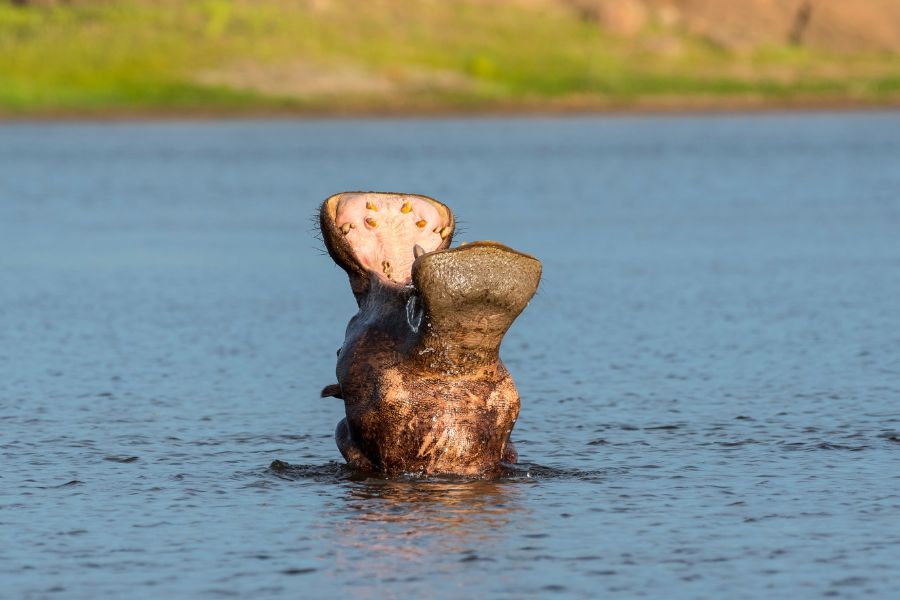
Above: Hippo yawning at Lake Kariba Zimbabwe
Pods of hippos usually consist of 10 to 30 members usually led by a dominant male.
You’ll find hippos in waterways, rivers, and pools in Zambezi National Park, Matusadona National Park, Mana Pools National Park, and of course, Lake Kariba.
The giraffe is the tallest mammal on Earth. These graceful creatures can run as fast as 35 miles an hour over short distances and up to 10 miles per hour over longer distances.
Just like human fingerprints, no two giraffes have the same coat pattern.
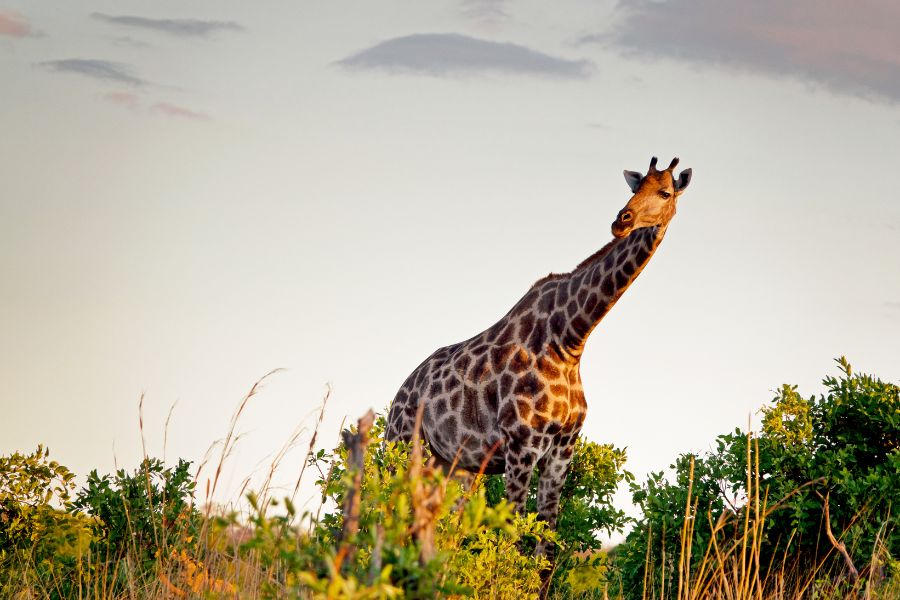
Above: Giraffe in Hwange National Park,Zimbabwe
Giraffes only drink once every few days and derive a lot of the water they need from the vegetation they eat, giving them an advantage over other animals which have to compete for water at water holes.
Giraffes spend most of their lives standing up – they even sleep and give birth in this position.
Baby giraffes can stand up and walk within their first hour of being born. Giraffes only need 5 – 30 minutes of sleep in a 24-hour period.
You can spot giraffes in Hwange National Park, Mana Pools National Park, Matobo National Park, and Gonarezhou National Park.
The African Wild Dog is one of the world’s most endangered species.
They have diverse tastes and hunt a wide variety of prey, including gazelles and other antelopes, warthogs, wildebeest calves, rats, and birds.
Also known as painted dogs due to their distinctive coats, they live in packs averaging from 7 to 15 members, although packs as large as 40 members have been observed.
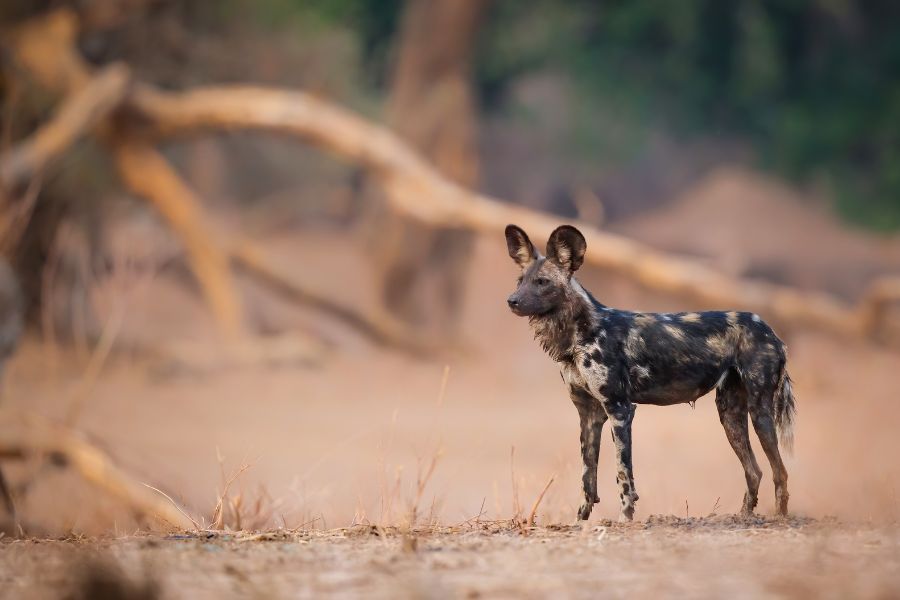
Above: African Wild Dog in Zimbabwe
Every hunting pack has a dominant pair, usually the only pair that remains monogamous for life. Both males and females babysit the young and provide food for them.
African wild dogs can run long distances at a speed of up to 35 miles per hour. These highly social and intelligent creatures can be found in Save Valley Conservancy, Hwange National Park, Mana Pools National Park, and Gonarezhou National Park.
Warthogs have tusks on their upper and lower jaws which they use to fight and protect their young from predators. They are incredibly hardy and can live for up to 17 years. Warthogs like to roll around in mud to protect their skin from the sun and parasites. They sleep in burrows at night – usually stolen from other burrowing animals like aardvarks.
While warthogs give birth to two to four piglets, mortality rates are high due to predators like leopards. Female warthogs are social animals and live in groups called sounders, which can contain up to 40 members. Males often live alone and can be highly territorial.
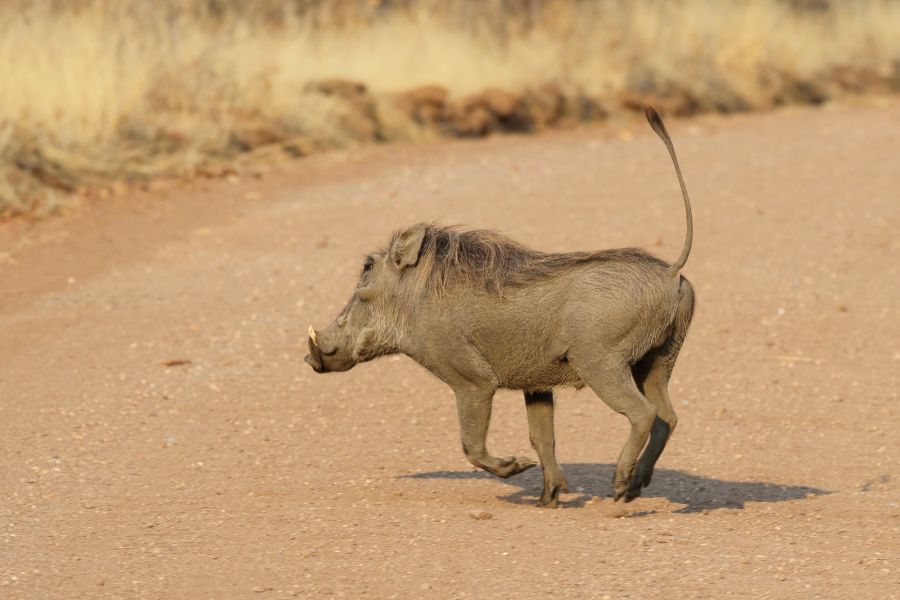
Above: Tail up warthog in Hwange National Park, Zimbabwe
A warthog’s diet can include roots, berries, bark, bulbs, grass, and plants. Being omnivorous, they have been known to eat meat in times of scarcity. You can easily spot warthogs in Hwange National Park, Mana Pools National Park, Matobo National Park, and Gonarezhou National Park.